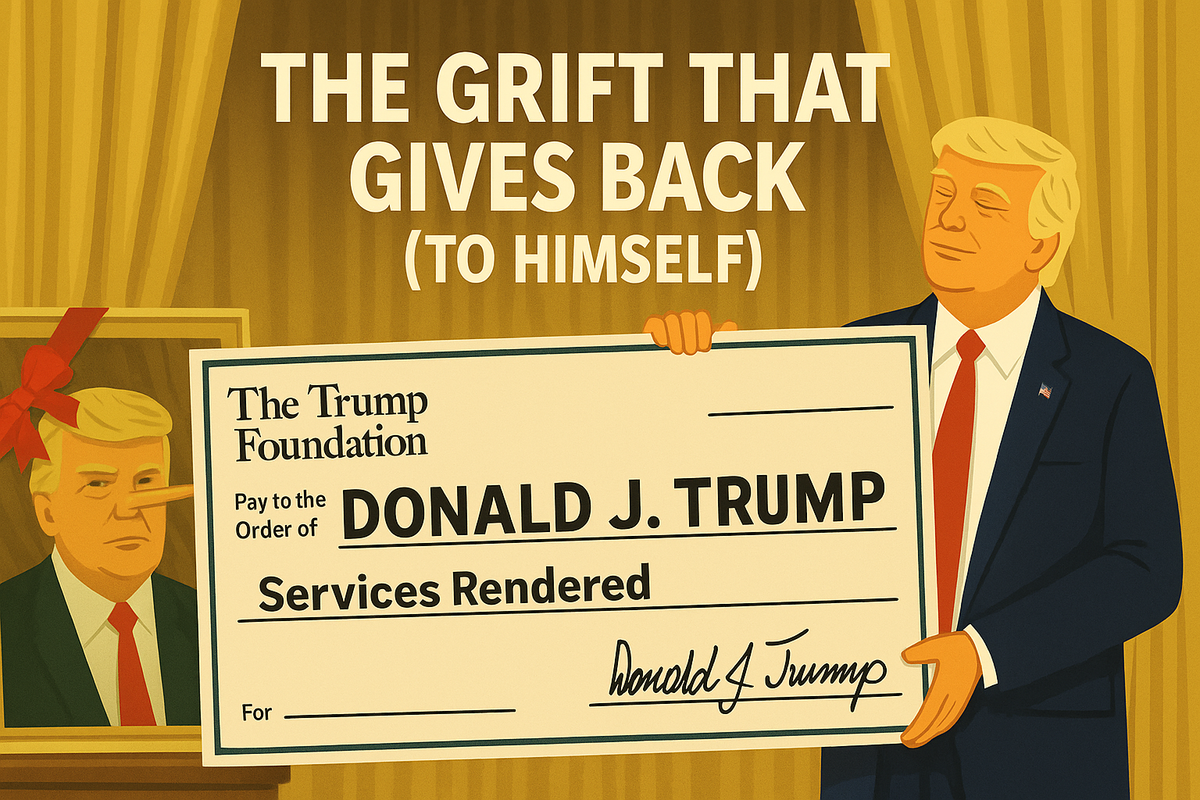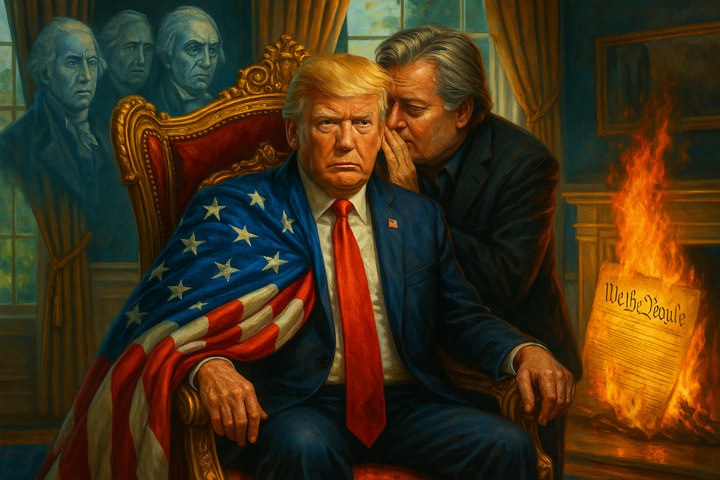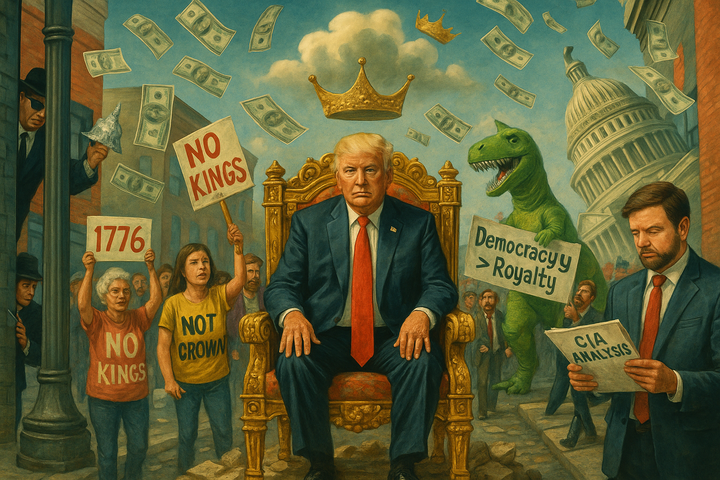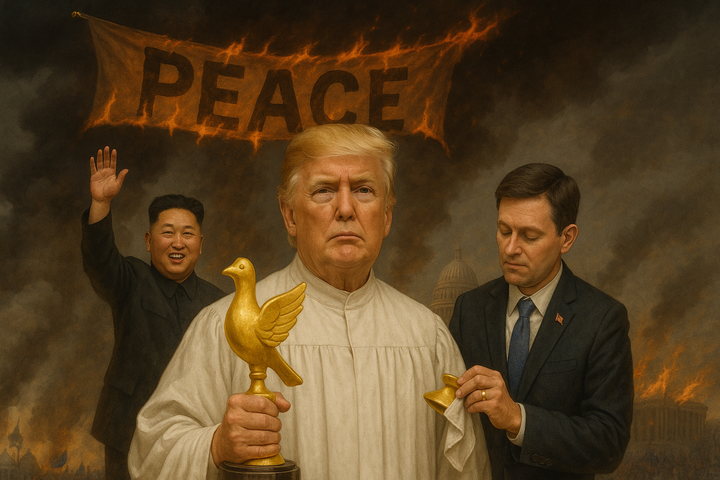Believe Me! — The Lies That Built the Brand - Part 3
Trump talked a big game about charity. But when the checks cleared, they led to portraits of himself, lawsuits, and a court-ordered shutdown. In Part 3 of Believe Me!, we follow the (donor) money.

Part 3: The Phantom Philanthropist — Trump’s Charity Begins at Trump
Donald Trump loves to talk about how generous he is. He’s a giver. A humanitarian. A selfless billionaire, if you believe the branding.
But when it comes to receipts? Let’s just say the Trump Foundation wasn’t exactly the Red Cross. In fact, it was so shady it got shut down. Literally.
In Part 3 of our Believe Me! series, we dig into Trump’s “charity”—and what we find is more self-dealing, ego-polishing, and grift.
The Billionaire Who Forgot to Give
For years, Trump bragged about his massive charitable giving.
“I give to hundreds of charities and people in need!”
—Trump, always, usually while holding a gold Sharpie
But when David Fahrenthold of The Washington Post actually looked for evidence of this generosity, he found… nothing. Like, truly nothing.
No big checks. No anonymous gifts. No hidden donations revealed in tax records.
Just years of exaggerated claims and one very tacky painting.
The Portrait That Launched a Thousand Facepalms
Here’s a real thing that happened:
Trump used $10,000 of charitable donations to buy a 6-foot-tall portrait of himself at a charity auction. Not as a joke. As décor.
Other “charitable” purchases made with foundation money:
- A Tim Tebow football helmet
- A flagpole for Mar-a-Lago
- A settlement for a Trump business lawsuit
When asked to explain why he used a children’s cancer charity as a corporate expense account, Trump responded with what we assume was a shrug and the word “fake news.”
The Foundation Was So Corrupt It Got Shut Down
In 2018, the New York Attorney General dismantled the Trump Foundation for “a shocking pattern of illegality.”
Letitia James didn’t just shut it down—she made Trump:
- Admit guilt in court
- Pay $2 million in restitution
- Agree that he and his children could never again run a charity in New York
That’s not philanthropy. That’s a white-collar crime plea deal.
Smoke, Mirrors, and Vanity Checks
Even when Trump claimed to be donating his own money, it often turned out to be:
- Someone else’s money
- A flat-out lie
- A delayed payout made only after negative press
He famously claimed to raise $6 million for veterans, but held onto it until publicly shamed into paying it out—four months later.
That’s not a donation. That’s a hostage negotiation.
Charity as Brand Strategy
To Trump, “charity” wasn’t about helping others. It was a prop. A headline. A marketing asset.
The Trump Foundation’s real mission wasn’t public service—it was public relations.
He gave just enough to create the illusion of generosity—then took the credit, the tax write-off, and maybe a trophy with his face on it.
Final Word: The Grift That Gives (to Himself)
Trump didn’t just weaponize disinformation (Part 1), or inflate his net worth into a hot-air business empire (Part 2).
He turned charity itself into a self-portrait.
Literally.
And he made the American public the audience for his longest-running scam: pretending to be something he’s never been.
Next Up:
Part 4 — “Sporty Lies: Fake Games, Real Grudges”
From imaginary home runs to NFL beefs and self-awarded golf trophies, we explore Trump’s long tradition of rewriting reality—one fantasy stat at a time.




Comments ()